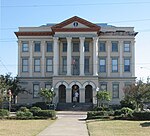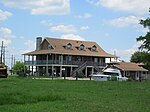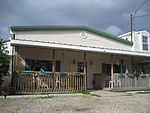Louisiana (Spanish: La Luisiana, [la lwiˈsjana]), or the Province of Louisiana (Provincia de La Luisiana), was a province of New Spain from 1762 to 1801 primarily located in the center of North America encompassing the western basin of the Mississippi River plus New Orleans. The area had originally been claimed and controlled by France, which had named it La Louisiane in honor of King Louis XIV in 1682. Spain secretly acquired the territory from France near the end of the Seven Years' War by the terms of the Treaty of Fontainebleau (1762). The actual transfer of authority was a slow process, and after Spain finally attempted to fully replace French authorities in New Orleans in 1767, French residents staged an uprising which the new Spanish colonial governor did not suppress until 1769. Spain also took possession of the trading post of St. Louis and all of Upper Louisiana in the late 1760s, though there was little Spanish presence in the wide expanses of what they called the "Illinois Country".
New Orleans was the main port of entry for Spanish supplies sent to American forces during the American Revolution, and Spain and the new United States disputed the borders of Louisiana and navigation rights on the Mississippi River for the duration of Spain's rule in the colony. New Orleans was devastated by large fires in 1788 and 1794 which destroyed most of the original wooden buildings in what is today the French Quarter. New construction was done in the Spanish style with stone walls and slate roofs, and new public buildings constructed during the city's Spanish period include several still standing today such as the St. Louis Cathedral, the Cabildo, and the Presbytere.Louisiana was later and briefly retroceded back to France under the terms of the Third Treaty of San Ildefonso (1800) and the Treaty of Aranjuez (1801). In 1802, King Charles IV of Spain published a royal bill on 14 October, effecting the transfer and outlining the conditions. Spain agreed to continue administering the colony until French officials arrived and formalized the transfer. After several delays, the official transfer of ownership took place at the Cabildo in New Orleans on 30 November 1803. Three weeks later on 20 December, another ceremony was held at the same location in which France transferred New Orleans and the surrounding area to the United States pursuant to the Louisiana Purchase. A transfer ceremony of Upper Louisiana to France and then to the United States took place on Three Flags Day in St. Louis. It encompassed a series of ceremonies held over two days: March 9–10, 1804.










